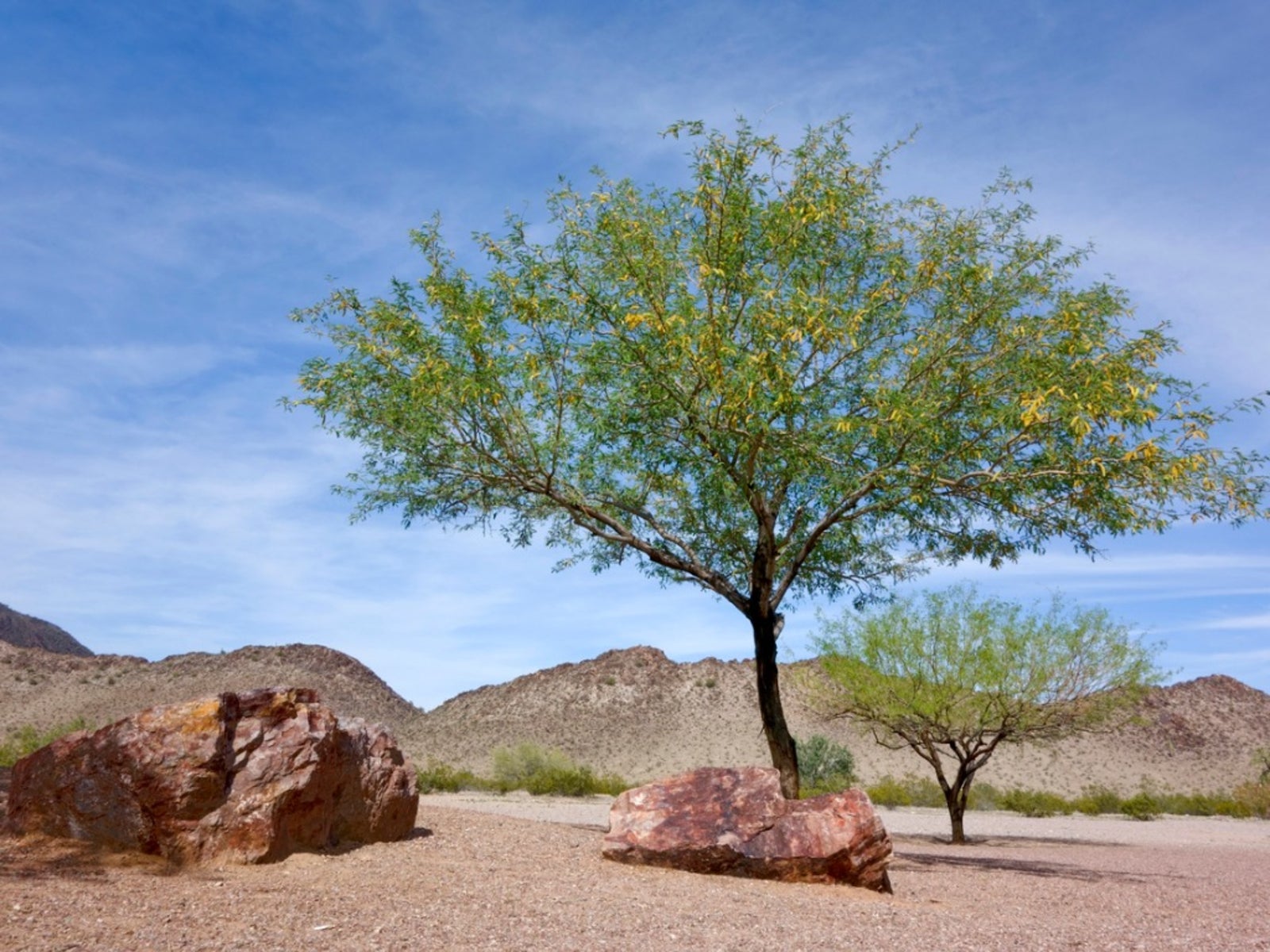Mesquite Tree Care - Growing Mesquite Trees In The Landscape


To many of us, mesquite is just a BBQ flavoring. Mesquite is common in the southwestern parts of the United States. It is a medium-sized tree that thrives in dry conditions. The plant is not well suited where soils are overly sandy or soggy. Gardeners in northern and eastern states will need a little information on how to grow a mesquite tree. These areas are more challenging, but it is possible to have mesquite trees in the landscape. Mesquite is an easy-to-care-for tree with few pests or problems.
Mesquite Plant Info
Mesquite plants (Prosopis) are found wild on flood plains, near streams and rivers, and in fields and grazing pastures. The plants have a unique ability to harvest moisture from the driest soils. The tree has a deep root structure, except where grown near waterways. In these areas, it has two different root systems, one deep and one shallow. Full mesquite plant info must also include the fact that they are legumes. The rickety, often scraggly tree is a haven for bees and a mass of color in spring. They produce sweet-smelling, yellow flowers that become pods. These pods are filled with seeds and are sometimes grounded for flour or used as animal feed.
How to Grow a Mesquite Tree
It is true that the mesquite tree is not the most attractive plant. It has a scrubby appearance and rather splayed limbs. The color display, sweet fragrance, and lure to honeybees make mesquite trees in the landscape valuable additions, and seeds from the pods remain viable for up to fifty years. Growing mesquite trees from seed is not an easy task, however. In spite of the vigor of the seeds, the correct conditions must be met. Germination takes place at 80 to 85 degrees F. (27-29 C.) under just a dusting of soil. A rainstorm or consistent water is necessary until the seed sprouts. Then dryer conditions and temperatures up to 90 degrees F. (32 C.) produce the best growth. The preferred method for growing mesquite trees is to order them from a reputable nursery. The plant will be in the juvenile state, bare-root and ready to bloom and fruit in three to five years.
Mesquite Tree Care
Mesquite trees are perfect for hot southern or western exposure and xeriscape plans. Make sure the soil is well-draining before planting. Dig a hole twice as wide and deep as the roots. Fill the hole with water and check to see if it is draining. If the hole remains filled with water half an hour later, incorporate 3 inches (8 cm.) of sand or gritty organic material. Once planted, the tree will need to be kept moist while it establishes. After two months, the feeder roots have spread out and the deeper roots are diving into the soil. The plant will not need supplemental water in most zones unless severe drought occurs. Mesquite tree care should also include a pruning regimen in early spring to encourage good branch formation. Remove the basal sprouts to keep vegetative growth from minimizing access. The tree is a legume, which fixes nitrogen in the soil. Supplemental nitrogen is not necessary and rarely does it need trace minerals.
Sign up for the Gardening Know How newsletter today and receive a free copy of our e-book "How to Grow Delicious Tomatoes".

Bonnie Grant is a professional landscaper with a Certification in Urban Gardening. She has been gardening and writing for 15 years. A former professional chef, she has a passion for edible landscaping.